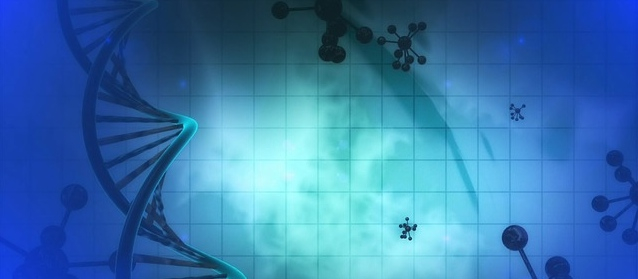
Kleefstra syndrome* (KS) is a rare genetic condition in humans caused by a deletion or mutation of the gene known as EHMT1. The deletion or mutation of the gene occurs in one of the two copies of a person’s chromosome 9. The EHMT1 deletion or mutation is almost always “de novo”, meaning that it is something that neither parent possessed or transmitted (although this may be possible in certain rare cases). The EHMT1 gene codes specifically for the production of a protein called euchromatin histone methyltransferase 1. A patient with KS is said to be haploinsufficient, meaning that the remaining level of EHMT1 protein activity is insufficient because one gene copy is not functional. EHMT1 is a critical gene in human development and function. The protein that is to be produced is part of the “epigenetic machinery” and is believed to be involved in the important process of silencing (or turning “off”) other genes; therefore, its deficiency results in a number of often serious medical issues discussed below.
KS is characterized by intellectual disability and various other neurological and physical abnormalities. With respect to intellectual disability, the majority of individuals are believed to function in the moderate to severe spectrum with an IQ of less than 70 in many cases. Most patients have severe expressive speech delay with little speech development, although nonverbal communication may be possible. With respect to other neurological and physical abnormalities, a patient may have childhood hypotonia (low muscle tone which is often associated with reduced muscle strength, and therefore, reduced basic gross motor skills such as walking), distinctive facial features (including mid-face hypoplasia, short nose/depressed nasal bridge, thin upper lip and open mouth in infancy with protruding tongue), various developmental delays and other physical abnormalities. Other physical abnormalities include heart defects, renal/urologic defects, genital defects in males, severe respiratory infections and epilepsy/febrile seizures. Behavioural abnormalities may include extreme apathy or catatonic-like features during or after puberty and autistic-like features in childhood (KS patients are often dual diagnosed with Autism Spectrum Disorder). In certain more severe cases, death has resulted from abnormalities or complications caused by KS. Included in this section is a comprehensive list of known features of KS patients, although it is important to note that the patient population remains small (which may lead to conclusions changing over time) and situations can vary from patient-to-patient.
Currently, there is no drug or similar therapeutic treatment for KS patients. As a result, managing KS on a day-to-day basis involves various therapies (mostly commonly speech, physical, occupational and behavioural), assistance of a parent or caregiver, careful monitoring of symptoms and making lifestyle choices based on the patient’s needs. Well-known medications may also be used to treat specific features such as epilepsy or behavioural problems.
For additional information on KS, visit the NIH website by clicking here.
*Kleefstra Syndrome (KS) was previously referred to as 9q34.3 deletion syndrome, 9q- syndrome or 9q subtelomere deletion syndrome
Common or Core Features:
- Intellectual disability (IQ of 70 or less)
- Limited or no speech capabilities
- Various developmental delays
- Low muscle tone, so babies and children feel floppy and are slow to crawl and walk
- Autistic-like features
Other Possible Features:
- Facial appearance may be similar to other KS patients
- Heart conditions
- Seizures
- Genital anomalies in males
- Sleep difficulties
- Behavioural difficulties
- Strabismus (squint) or other unusual eye features
- Respiratory infections caused by aspiration reflux/GERD
- Microcephaly
- Slightly unusual hands and/or feet (single palm crease, incurving fingers, short or tapering fingers, unusually positioned feet)
- Hearing impairment
- Kidney anomalies
- Connective tissue disorders, including lax joints and hernias
- Patches of lighter skin colouring
- Dental anomalies
- Anal atresia (the normal opening for the anus is not present)
- Possibly overweight

KS Patient Population Believed To Be Much Larger Than Current Estimate of 500 People
K.I.D.S. IQ Project’s records currently indicate that the worldwide KS population is approximately 500 people. However, since KS is a relatively newly discovered genetic condition, it is believed by some geneticists and members of the scientific community that this figure could be dramatically higher. Anecdotal evidence suggests that awareness of KS is generally quite low, even amongst members of the medical community including pediatricians and geneticists, so there is limited diagnostic testing in this area. Diagnostics/screening tests do not take place during pregnancy (unlike in other syndromes such as Down syndrome). In addition, diagnostic tests to identify KS (after birth) require a medical referral which may not be provided due to KS’s relatively unknown nature. Often, patients are given other incorrect medical explanations or a less specific and broader diagnosis. Therefore, as the estimated number of individuals affected by KS is low today, the incidence of KS is likely far greater than current estimates.

Kleefstra Syndrome Spectrum (KSS)
A number of other genes have now been identified that interact very closely with EHMT1, the gene associated with KS. Patients who exhibit KS-type symptoms often have a gene deletion or mutation in one of these other genes (instead of EHMT1) – such patients are referred to as KSS patients and are estimated to be 3 times larger in terms of patient population (although limited data is available); it is believed that a treatment for either KS or KSS patients could prove effective for all patients in this spectrum.
